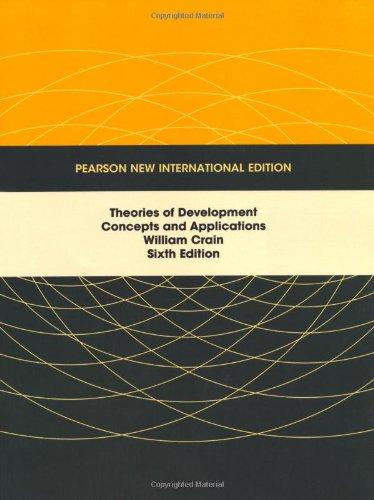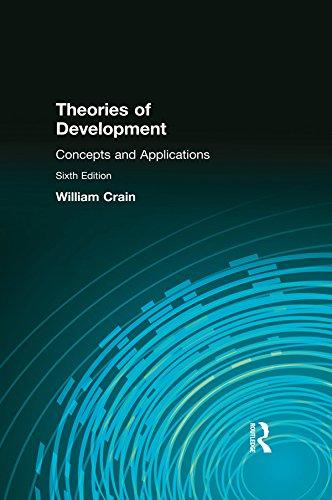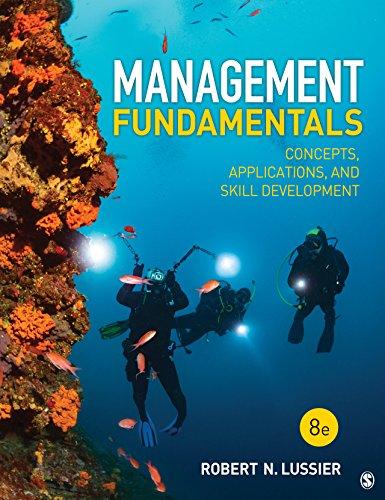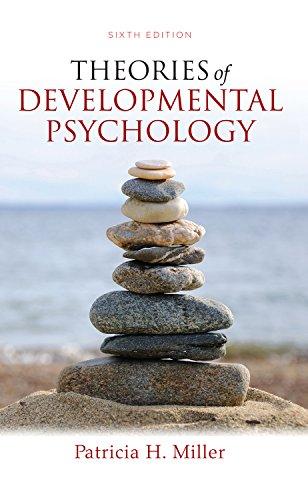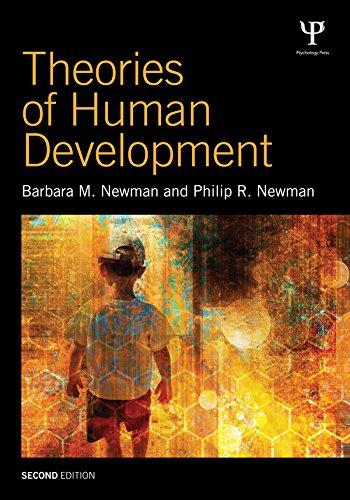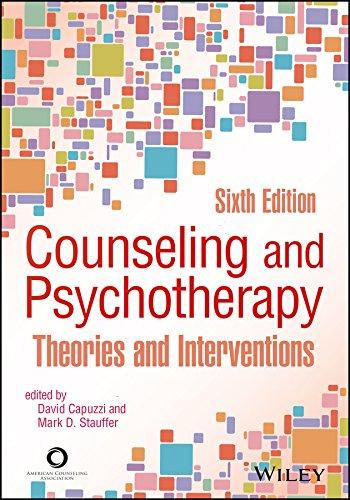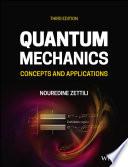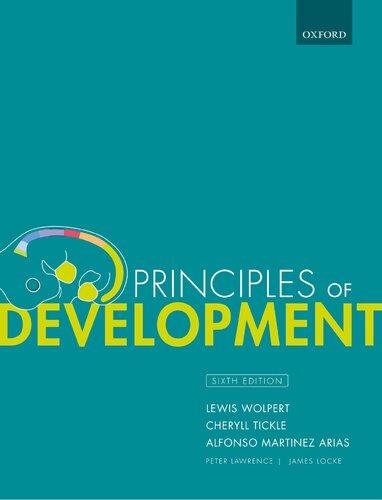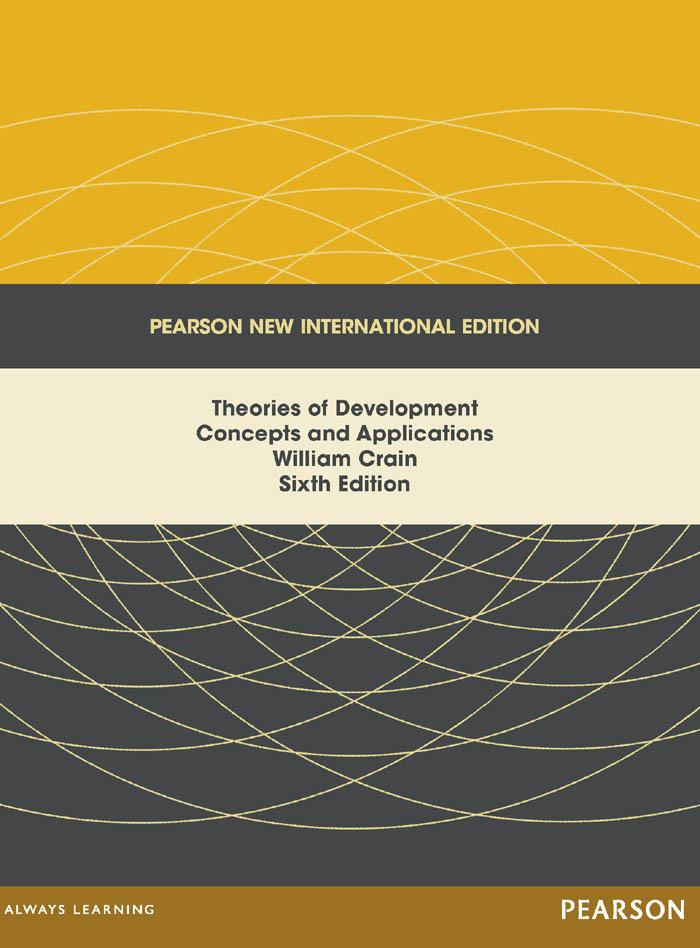Early Theories: Preformationism, Locke, and Rousseau
The two great pioneers in child psychology were John Locke and Jean-Jacques Rousseau. Locke was the father of environmentalism and learning theory; his heirs are scientists such as Ivan Pavlov and B. F. Skinner. Rousseau began the developmental tradition in psychology; his followers include Arnold Gesell, Maria Montessori, Heinz Werner, and Jean Piaget. Both Locke and Rousseau made radical departures from an earlier outlook called preformationism.
PREFORMATIONISM
For centuries, people seem to have looked on children as fully formed miniature adults. The French historian Philippe Ariès (1914–1984) described how this view was predominant during the Middle Ages. Medieval paintings and sculptures, for example, routinely portrayed children—even newborns—with adult body proportions and facial characteristics. The children were distinguished only by their size. It was as if the children had arrived preformed in the adult mold (Ariès, 1960, pp. 33–34).
In medieval social life, too, Ariès argued, children were treated like adults. When they were 6 or 7 years old, they were typically sent off to other villages to begin working as apprentices. They learned carpentry, farming, domestic service, weaving, and other crafts and trades on the job. The child lived as a boarder in a master’s house and often worked alongside other apprentices who were much older than he or she. No one paid much attention to the child’s age, for the child had basically entered adult society. The child wore the same clothes, played the same games, and participated in the same festivals as the grownups
From Theories of Development: Concepts and Applications, Sixth Edition. William Crain. Copyright © 2011 by Pearson Education, Inc. Published by Pearson Prentice Hall. All rights reserved.
Early Theories
(Ariès, 1960, pp. 71–72, 411). “Wherever people worked,” Ariès said, “and also wherever they amused themselves, even in the taverns of ill repute, children mingled with the adults” (p. 368).
Ariès acknowledged that younger children—before the age of 6 or 7— were treated differently. People recognized their need for protection and care. But on the whole, Ariès suggested, people were indifferent to children’s special characteristics. No one bothered to study, for example, the infant’s developing speech or motor development; and when artists included children in their paintings, they depicted even newborns as miniature adults.
Some historians have challenged Ariès’s views. Because medieval written documents are sparse, it’s difficult to evaluate all the disagreements, but historians such as Barbara Hanawalt (1986) and Shulamith Shahar (1990) have gathered enough evidence to indicate that Ariès was sometimes prone to overstatement. It appears that apprenticeships, while common, were not as universal as Ariès claimed, and that 6- and 7-year-olds sometimes entered the adult workplace more gradually than Ariès implied. Still, by the age of 12 or so, most children were carrying out adult responsibilities, and I believe that Ariès’s critics have done more to qualify Ariès’s accounts than to refute them.
Moreover, other sources have shown that the image of children that Ariès highlighted—that of the child as a little adult—has been prevalent throughout the ages. This image is perhaps most evident in preformationistic theories in embryology. For centuries, many scientists believed that a tiny, fully formed human, or homunculus, is implanted in the sperm or the egg at conception (see Figure1). They believed that the human is “preformed” at the instant of
Drawing by Hartsoeker (1694) of a fully formed human in the sperm. (Reprinted in Needham,1959,p.206.)
FIGURE 1
Early Theories
conception and only grows in size and bulk until birth. Preformationism in embryology dates back at least to the fifth century B . C . E .and is found in scientific thinking throughout the ages. As late as the 18th century, most scientists held preformationist views. They admitted that they had no direct evidence for a fully formed homunculus, but they argued that this was only because it is transparent or too small to see (Balinsky, 1981, p. 11; Needham, 1959, pp. 34–35, 91, 213–222).
As we look back on the “little adult” views of the past, it’s easy to regard them as quaint and antiquated. But we often lapse into the same thinking today, as when we expect young children to be able to sit as still as we can in social settings, or when we assume that their thinking is the same as ours. For example, I was recently standing in a supermarket checkout line and heard a mother next to me upbraid her toddler for having put several items that he liked into the shopping cart: “You know I can’t afford those things,” the mother said, as if the toddler had an adult knowledge of grocery budgets. We are vulnerable to an adult egocentrism and assume that even young children think as we do, even if our attitude isn’t as dominant as it once was (Ausubel, 1958, p. 24).
In embryology, preformationism gave way during the 18th century, when microscopic investigations showed that the embryo developed in a gradual, sequential manner. In European social thought, preformationism began to decline earlier, in the 16th century, accompanying changes in the occupational world.
During the Middle Ages, most of the occupations—such as farming, carpentry, domestic service, metal work, and weaving—required skill, but the adults believed that 6- and 7-year-olds could begin learning them on the job. Children, therefore, were able to mix in with adults. After 1500 or so, the occupational world showed clear signs of change. With the invention of the printing press, the growth of commerce and market economies, and the rise of cities and nation-states, the occupational world began to take on a “whitecollar” look. New opportunities arose for merchants, lawyers, bankers, journalists, and government officials—occupations that required reading, writing, and math. The members of a rising middle class saw that they could advance their families’ fortunes by providing their children with the academic instruction that these new occupations required. This new demand for education sparked a tremendous growth of schools in 16th- and 17th-century Europe (Crain, 1993).
The upshot was that growing numbers of parents (especially in the middle class) were no longer willing to send their children off to work at the age of 6 or 7 years. Parents wanted their children to go to school first. Parents began keeping their children in school at least until they were 12 years old, and often until they were well into their teens. Thus the growth of schools gave the child a new status. The child was no longer someone who was ready for the adult world, but someone who had to be kept apart from it while undergoing
an extensive education. The child was seen less as a little adult and more as a future adult (Ariès, 1960, pp. 329, 412).
LOCKE’S ENVIRONMENTALISM
Biographical Introduction
As the rising middle class pursued new opportunities, it challenged the traditional feudal order. The middle class no longer accepted a society in which everyone’s place was predetermined by birth. It sought a brighter future, pinning great hopes on education to bring it about. In so doing, it helped usher in the modern way of life.
But the feudal regime wasn’t about to just hand over its authority. It imposed economic regulations and waged an ideological war. It accused the new middle class—the bourgeoisie—of selfishly abandoning loyalty, honor, and the old ways.
In these battles, those seeking change drew inspiration from the intellectuals of the 18th-century Enlightenment, such as Denis Diderot and Nicolas de Condorcet. These writers argued that if people could rid themselves of the authoritarian state and church, people could live freely and democratically, and science, technology, and education would produce great progress for all. These writers, in turn, drew heavily on the late-17th-century theories of the British philosopher John Locke (1632–1704).
Writing in language that was refreshingly clear and sensible, Locke rejected the widespread belief that there are vast, innate differences among people. Instead, Locke argued, people are largely shaped by their social environments, especially by their education. Locke then showed how this happens and how education could be improved. To many Enlightenment thinkers, Locke’s writings were full of wonderful possibilities. If one could change people’s environments and education, one could produce an egalitarian, democratic society (Gay, 1969, pp. 511–516).
Locke was born in the village of Somerset, England. His father, a small landowner, was the first to instill in him a belief in democracy. Locke attended the Westminster School and Oxford University, but found both plagued by the pedantic lessons so prevalent in his day. Although he seems to have been a rather shy boy, he frequently became so bored and restless in class that he preferred to talk to his classmates rather than pay attention to the instructor (Pheardon, 1952, p. vii; Quick, 1880, p. xx; Sahakian & Sahakian, 1975).
Still, Locke did well enough at Oxford to gain appointments at the university tutoring Greek and moral philosophy. For a while, Locke had trouble deciding on his future. Adevout Christian, he thought he might become ordained in the Church of England, but he decided to study medicine instead,
Early Theories
primarily so he could learn about the natural sciences. He assisted a noteworthy chemist, Robert Boyle, and was deeply impressed by the scientific method and its reliance on empirical evidence. As a physician, Locke successfully treated Lord Ashley, later the Earl of Shaftesbury; became Shaftesbury’s friend and personal secretary; and also tutored his grandson. His association with Shaftesbury, however, eventually proved troublesome. When Shaftesbury was imprisoned for criticizing the king, Locke was forced to flee England and find asylum in Holland. There, Locke wrote a series of letters to his friend Edward Clark, offering advice on the upbringing of Clark’s son. These letters inspired Locke’s most important work on education, Some Thoughts Concerning Education (1693). After the successful Revolution of 1688, Locke returned to England and saw the publication of two other great books. The first was his Essay Concerning Human Understanding (1690), which established him as the father of empiricism in philosophy and learning theory in psychology. His other great book was Two Treatises on Government (1689), which set forth many of the central ideas in the U.S. Constitution (Lamprecht, 1928; Russell, 1945).
Locke’s View of Development
The starting point of Locke’s theory was his refutation of the doctrine of innate ideas. Prior to Locke, many philosophers held that some ideas, such as mathematical truths and beliefs in God, are innate, existing in the mind prior to experience. Locke argued that observations of children will show that these ideas are not present from the beginning and that they are learned. He said it is more accurate to think of the child’s mind as a blank slate, and whatever comes into the mind comes from the environment. We might consider
the mind to be, as we say, white paper void of all characteristics, without any ideas. How comes it to be furnished?...Whence has it all the materials of reason and knowledge? To this I answer, in one word, from experience; in that all our knowledge is founded, and from that it ultimately derives itself. (1690, vol. 1, bk. 2, sec. 2, emphasis in original)
Locke did qualify this statement a bit. He noted that although most of a person’s knowledge comes from the environment, a person also can learn, in time, by reflecting on his or her own thinking and beliefs (1690, vol. 1, bk. 2, chap. 1). Locke also acknowledged that there are some innate differences among individuals (1693, sec. 1).
But on the whole, Locke said, it’s the environment that molds the mind. And the environment’s influence, Locke emphasized, is especially powerful in the child’s early years. This is when the child’s mind is most pliable, when
Early Theories
we can mold it as we wish. And once we do so, its basic nature is set for life (1693, secs. 1, 32).
Precisely how does the environment exert its effects? First, many of our thoughts and feelings develop through associations. Two ideas regularly occur together, so we cannot think of one without simultaneously thinking of the other. For example, if a child has had bad experiences in a particular room, the child cannot enter it without automatically experiencing a negative feeling (Locke, 1690, vol. 1, bk. 2, chap.33, sec. 15).
Much of our behavior also develops through repetition. When we do something over and over, such as brushing our teeth, the practice becomes a natural habit, and we feel uneasy when we have failed to perform it (Locke, 1693, sec. 66).
We also learn through imitation. We are prone to do what we see others do, so models influence our character. If we are frequently exposed to silly and quarrelsome people, we become silly and quarrelsome ourselves; if we are exposed to more noble minds, we too become more noble (1693, sec. 67).
Finally, and most important, we learn through rewards and punishments. We engage in behavior that brings praise, compliments, and other rewards; we refrain from those actions that produce unpleasant consequences (sec. 54).
These principles, Locke believed, often work together in the development of character. For example, a little girl is likely to hang up her clothes if she sees her parents hang theirs up, through imitation. After she hangs up her clothes a few times in succession, this good trait becomes a habit, and this habit becomes all the stronger if she receives some praise or compliment for it.
The previous example illustrates the usefulness of Locke’s ideas for bringing up a child. Let us now look more closely at his views on education.
Locke’s Educational Philosophy
Locke thought of education broadly, as the formation of the child’s character as well as academic learning. In fact, he gave greater weight to character development, so we will consider this first.
Self-Control. Locke said the main goal of education is self-control: “It seems plain to me that the principle of all virtue and excellency lies in a power of denying ourselves the satisfaction of our own desires, where reason does not authorize them” (1693, sec. 38).
To instill self-discipline, we first should tend to the child’s physical health. When the body is sick and weak, one has little ability to control its demands. Accordingly, Locke advised us to give children plenty of exercise so their bodies will become strong, and he suggested that children play outdoors in all seasons so they will learn to endure the hardships of all kinds of weather (secs. 1–16, 33).
If children are to acquire discipline, we must be firm with them from the start. Many parents coddle their children and give in to their every whim; the parents think that such indulgence is all right because their children are still small. But the adults fail to realize that early habits are difficult to break. Children who find that they can get whatever they want, simply by asking or crying out, never unlearn this bad habit. So parents should never reward children when they desire things they do not need. Children should learn that they will get favorable results only when they ask for things that their parents consider appropriate (secs. 38–40).
The Best Rewards and Punishments. From the beginning, then, we should pay close attention to how we reinforce our children’s behavior. We should reward only reasonable behavior, never behavior that is unreasonable or self-indulgent.
The use of rewards and punishments, however, is a tricky matter. Not all rewards and punishments produce desirable effects. Locke was especially opposed to the use of physical punishment. In the first place, its use establishes undesirable associations. If a child is beaten or chastised for letting her mind wander during reading lessons, she will not only associate pain with mind wandering, but with the sight of books as well. Further, physical punishment is often ineffective. The child submits while the rod is in sight, but just as soon as the child sees that no one is looking, she does whatever she wants. Finally, when physical punishment does work, it usually works too well. It succeeds in “breaking the mind; and then, in the place of a disorderly young fellow, you have a low-spirited moped creature” (sec. 51).
Similarly, not all kinds of rewards are desirable. Locke opposed the use of money or sweets as rewards because their use undermines the main goal of education: to curb desires and to submit to reason. When we reward with food or money, we only encourage children to find happiness in these things (sec. 52).
The best rewards are praise and flattery, and the best punishment is disapproval. When children do well, we should compliment them, making them feel proud; when they do poorly, we should give them a cold glance, making them feel ashamed. Children are very sensitive to approval and disapproval, especially from their parents and those on whom they depend. So we can use these reactions to instill rational and virtuous behavior (sec. 57).
We also can strengthen the effectiveness of our approval and disapproval by pairing these reactions with other consequences. For example, when a little boy asks politely for a piece of fruit, we give it to him, and we also compliment him on his politeness. In this way, he learns to associate approval with agreeable consequences and thus becomes more concerned about it. Alternatively, when he breaks something he likes, we add a look of disappointment in him, so he will come to associate our disapproval with negative consequences. Through such practices, we deepen the child’s concern for the opinions of others. Locke
Early Theories said that if you can make children “in love with the pleasure of being well thought on, you may turn them as you please, and they will be in love with all the ways of virtue” (sec. 58).
Small Steps. Locke was concerned that children acquire many fears. For example, children are initially attracted to animals, but when one hurts a child’s finger, she associates the sight of the animal with pain and fears all animals of the same species. Locke wanted children to grow up to be brave adults, so he recommended a method for eliminating fears. He didn’t advise adults to just rush in and try to break the child of fears, but to eliminate them by “gentle degrees” (sec. 115). If a child fears a chicken, we should first let someone else sit beside the chicken at some distance from the child, until the child can watch the animal without fear. Then we should slowly and gradually bring the child closer to the chicken, making sure the child can observe the chicken without anxiety. Finally, we let the child touch the chicken while the chicken is held by another, until the child herself can handle the animal comfortably.
Rules. Most parents set down all kinds of rules and then punish their children when they disobey them. This practice is basically useless. Children have great difficulty comprehending and remembering rules in the abstract, and they naturally resent getting punished for failing to comply with a rule that they could barely keep in mind. As an alternative to commands, Locke suggested two procedures.
First, since children learn more from example than precept, we can teach them much by exposing them to good models. Children will eagerly model their behavior after that of a virtuous person, especially when we compliment them for doing so (sec. 68).
Second, Locke suggested that, instead of issuing commands, we have children practice the desired behavior. For example, instead of instructing children to bow whenever they meet a lady, it is better to give them actual practice in bowing, complimenting them each time they bow correctly. After repeated practice, they will bow as naturally as they breathe, without any thought or reflection, which is essentially foreign to them anyway (sec. 66).
Children’s Special Characteristics. Locke’s discussion of the futility of teaching rules that exceed a child’s understanding introduced something new into his system. Before this, he had written as if the child’s mind were a lump of clay that we could mold in any way we wished. Now, however, he was saying that children have their own cognitive capacities that set limits on what we can teach. He also suggested that children have temperaments peculiar to their age, such as a liking for noise, raucous games, and gaiety, and he added that it would be foolish to try to change their natural dispositions (sec. 63). Thus Locke seemed to admit that children are not blank slates
Theories
after all. As various scholars have pointed out (e.g., Kessen, 1965, pp. 59, 72; Russell, 1945, p. 606), Locke was not above a certain amount of inconsistency. If he had insights that contradicted his basic environmentalism, the inconsistency didn’t trouble him.
Academic Instruction. Locke was upset by the academic instruction of his time, which forced children to spend long hours a day struggling with material that made no sense to them. Locke pointed out that instruction is most effective when children enjoy it. He suggested that children could learn many things, such as reading letters and words, through games (secs. 148, 150). Locke also recommended that instruction be arranged in steps, so children could thoroughly master one topic before going on to the next, and he wanted children to see the order and usefulness of their studies (secs. 180, 195).
Locke acknowledged that children will dislike some of the lessons that adults consider necessary for their future. In these cases, the teacher should try to ease the children through them. Certainly the teacher should avoid physical punishment or strong verbal rebukes. Harsh discipline simply makes the child fearful, and a teacher can’t do much with a fearful child. As Locke put it, “’Tis as impossible to draw fair and regular characters on a trembling mind as on shaking paper” (1693, sec. 167). It is better to rely on the kinds of rewards and punishments discussed earlier—praise and disapproval. In an interesting passage (secs. 118–119), Locke emphasized the need to take advantage of the child’s natural curiosity. Children, he said, learn for the sake of learning; their minds seek knowledge like the eye seeks light. If we simply listen to their questions and answer them directly, their minds will expand beyond what we would have imagined possible. In fact, Locke attributed such power to the child’s natural curiosity that it makes one wonder about his general thesis. If the child’s curiosity is so powerful, why do we need to use external rewards and punishments for learning? Perhaps they are necessary in the training of the child’s character, but it may be that children will develop their intellectual powers through intrinsic curiosity alone. But if Locke saw such a possibility, he didn’t say anything about it, and in the end he reverted to his environmental thesis. When children reason clearly, we should compliment and flatter them. In this way, we teach them to reason (sec. 119).
Evaluation
As a psychologist, Locke was far ahead of his time. His principles of learning— the principles of association, repetition, modeling, and rewards and punishments—all have become cornerstones of one or another version of modern learning theory. His thoughts on changing behavior by “gentle degrees” is fundamental to some of the most contemporary thinking in
Early Theories
the field. We shall see the extent to which Locke anticipated modern thinking in later chapters.
Locke’s ideas on education, in addition, are pretty much those of the contemporary educator. Most teachers use rewards and punishments, such as praise, grades, and criticism, to motivate children to learn. Most enlightened teachers are also aware of the influence of models and the need to proceed in arranged steps and are opposed to physical punishment.
Most modern educators even share Locke’s inconsistencies. Although they believe it is necessary to shape or mold the child through rewards and punishments, they also recognize that such social influences are not all-powerful. They are sensitive to the child’s readiness to learn different things, and they recognize that children learn best when they are spontaneously curious about a particular subject. Nevertheless, like Locke, educators are not prepared to rely too heavily on children’s intrinsic motivation to learn on their own. Teachers believe it is up to them, the adults, to teach children the right things. They do not really believe children would learn what they should without external inducements such as praise and grades. In general, they share Locke’s view that education is essentially a socialization process. The child learns to gain adults’ approval, and in this way the child learns what he or she needs to know to become a useful and virtuous member of society.
ROUSSEAU’S ROMANTIC NATURALISM1
Biographical Introduction
We have now reviewed two early conceptions of development. We have discussed the preformationist view, which considered the child as a miniature adult. We also have looked at the views of Locke, who argued that children are like empty containers that are filled by adult teachings.
The true developmentalist position is different again. Its first forceful expression is found in the work of Jean-Jacques Rousseau (1712–1778). Rousseau agreed with Locke that children are different from adults, but he made the point more positively. Children are not empty containers or blank slates but have their own modes of feeling and thinking. This is because they grow according to nature’s plan, which urges them to develop different capacities and modalities at different stages.
Rousseau believed that it is vital for us to give nature the chance to guide the child’s growth. Unlike Locke, he had no faith in the powers of the environment, especially the social environment, to form a healthy individual. Wellsocialized adults, he felt, are far too dependent on the opinions of others. They have forgotten how to see with their own eyes and to think with their own
1This heading is suggested by Muuss (1975, p. 27).
minds; they see and think only what society expects them to. So, instead of rushing in to teach children to think in the “correct” ways, we should allow them to perfect their own capacities and to learn in their own ways, as nature intends. Then they will learn to trust their own powers of judgment.
Rousseau’s beliefs, especially his faith in nature as opposed to societal influences, sparked the Romantic movement in the history of ideas. At the same time, his belief in a natural ground plan for healthy growth ushered in the developmental tradition in psychology.
Rousseau’s revolt against society grew out of his personal life. He was born in Geneva, the son of a watchmaker and a beautiful, sentimental mother who died giving birth to him. For the first 8 years of his life, he was raised by his father and an aunt. He said his father was devoted to him, but he added that his father never let him forget he had caused his mother’s death (Rousseau, 1788, p. 5). His aunt also was kind, but she refused to let him play in the street with the other children. Rousseau therefore spent most of his time reading, and by the age of 7 he had read every novel in his mother’s library.
When Rousseau was 10 years old, his father got into a bitter dispute and had to flee Geneva to avoid prison. For the next 6 years, Rousseau was shuttled through several homes. He rarely got along with his masters, who often humiliated him, intensifying his already timid and self-conscious nature. He told, for example, of wanting to buy some pastry but of being afraid to enter the shop because he imagined that acquaintances would spot him and laugh at him (1788, p. 36). His main relief came from fantasies, in which he imagined himself in the heroic situations he had read about. He also engaged in a good deal of stealing and cheating.
When Rousseau was 16 he began the life of a vagabond. He traveled about, trying to earn what money he could, but he was never successful. His main talent, he found, was winning the favors of older women. He was not exactly a Don Juan—he was very timid when it came to sex—but he did get several ladies to take care of him.
At the age of 29, Rousseau invented a new system of musical notation, which he took to Paris. It was poorly received, and he was deeply disappointed. Still, his efforts to publish the system brought him into contact with some of the great minds of the 18th-century Enlightenment—people such as Diderot, Voltaire, and Condorcet. Rousseau even contributed some articles (mostly on music) to Diderot’s Encyclopedia. But even among such creative and courageous thinkers—who were frequently arrested for their writings—Rousseau felt like an outsider. For one thing, he felt too shy to participate in the witty and clever dialogue of the Paris salons and social life. Moreover, Rousseau was developing a viewpoint that differed from that of other Enlightenment intellectuals. He, too, rejected dogmatic authority, but he didn’t share their optimistic belief in progress. In some ways, Rousseau believed, people in the modern metropolis were worse off than ever. They
Early Theories were so busy making a good impression and saying the right things that they had no thoughts or feelings of their own (Berman, 1970; Cranston, 1982, pp. 163–164, 217–221; Rousseau, 1788, pp. 267–268, 346, 354).
At the age of 33, Rousseau’s personal life underwent a major change. He took up with an illiterate servant girl named Thérèse, with whom he spent the rest of his life. She gave birth to five children, but Rousseau placed them all in a state foundling home. He said that he later realized his action was wrong, but at the time he did not have the money to raise them, and he felt that if he did they would wind up living a life as miserable as his own (Rousseau, 1788, p. 367).
Rousseau’s first major literary success came at the age of 37, when he entered an essay contest that asked whether the arts and sciences had contributed to the betterment of morals. Rousseau argued in the negative and won the prize (Rousseau, 1750). During the next several years, he wrote several essays and books, the most important of which are The Social Contract (1762a) and Emile (1762b). The Social Contract opens with the famous line, “Man is born free, and everywhere he is in chains.” That is, humans are naturally good and could live happily according to their spontaneous passions, but they are enslaved by social forces. This book describes a better society. Emile is Rousseau’s main book on child development and education. It is titled after the fictitious boy whom Rousseau proposed to tutor according to nature’s plan for healthy development.
In the course of his writings, Rousseau challenged the feudal state and church. He considered himself a devout Christian, but he argued against uncritical conformity to religious authority. As a result, officials in Paris tried to arrest him and those in Geneva barred him from the city, and he spent many of his last years in exile, paranoid and miserable. When Rousseau died, he was buried in the French countryside, where his body remained until after the French Revolution, which his writings had helped inspire. His remains were then triumphantly removed to Paris and placed in the Pantheon.
Many people have found Rousseau so deficient as a man that they have refused to take his ideas seriously, especially on education. How can a man who abandoned his own children to an orphanage have the audacity to prescribe the right upbringing for others? However, it sometimes takes one who has lived on the outside of the conventional social order to create a radical vision. Rousseau said that he was “thrown, in spite of myself, into the great world, without possessing its manners, and unable to acquire or conform to them” (1788, p. 379). He believed his only legitimate response was to rail against society and to seek, in its place, a different vision of how life might unfold. He tried to show how the healthiest development might come not from society’s influence, but from nature. In so doing, Rousseau became the father of developmental psychology.
Rousseau’s Theory of Development
Childhood has a special place in the sequence of human life, yet we know nothing about it. This is because we are so exclusively concerned with the child’s future—with the things the child will need to know to fit into adult society. Even “the wisest writers devote themselves to what a man ought to know, without asking themselves what a child is capable of learning. They are always looking for the man in the child, without considering what he is before he becomes a man” (Rousseau, 1762b, p. 1).
When we take the time simply to observe children, we find that they are very different from us. “Childhood has its own ways of seeing, thinking, and feeling” (Rousseau, 1762b, p. 54). This is according to nature’s design. Nature is like a hidden tutor who prompts the child to develop different capacities at different stages of growth (p. 181). Her product might not be an individual well trained to fit into a social niche, but rather a strong, complete person. If we wish to aid nature in this process, we must first learn all we can about the stages of development. Rousseau believed there are four main stages.
Stage 1:Infancy (birth to about 2 years). Infants experience the world directly through the senses. They know nothing of ideas or reason; they simply experience pleasure and pain (p. 29). Nevertheless, babies are active and curious and learn a great deal. They constantly try to touch everything they can, and by doing so they learn about heat, cold, hardness, softness, and other qualities of objects (p. 31). Infants also begin to acquire language, which they do almost entirely on their own. In a sense, they develop a grammar that is more perfect than ours; they employ grammatical rules without all the exceptions that plague adult speech. Pedantically, we correct their mistakes, even though children will always correct themselves in time (p. 37).
Stage 2:Childhood (about 2 to 12 years). This stage begins when children gain a new independence; they can now walk, talk, feed themselves, and run about. They develop these abilities, too, on their own (p. 42).
During this stage, children possess a kind of reason. But it is not the kind that deals with remote events or abstractions. Rather, it is an intuitive reason that is directly tied to body movement and the senses. For example, when a girl accurately throws a ball, she demonstrates an intuitive knowledge of velocity and distance. Or when a boy digs with a stick, he reveals an intuitive knowledge of leverage. However, thinking is still extremely concrete. Achild can be taught about a globe, with all the countries, towns, and rivers. But when asked, “What is the world?,” he is likely to say, “Apiece of cardboard” (p. 74).
Stage 3:Late Childhood (about 12 to 15 years). This third stage is a transitional one between childhood and adolescence. During this period, children gain an enormous amount of physical strength; they can plow, push
Early Theories carts, hoe, and do the work of adults (p. 128). They also make substantial progress in the cognitive sphere and can, for example, do relatively advanced problems in geometry and science. Still, they are not yet disposed to think about purely theoretical and verbal matters. Instead, they can best exercise their cognitive functions through concrete and useful tasks, such as farming, carpentry, and mapmaking.
During the first three stages, children are by nature presocial. That is, they are primarily concerned with what is necessary and useful to themselves and have little interest in social relationships. They enjoy working with physical things and learning from nature; the world of books and society is foreign to them. Even as late as the third stage, between 12 and 15 years, the model for the child’s life should be Robinson Crusoe, a man who lived alone on an island and who became self-sufficient by dealing effectively with the physical environment (p. 147).
Stage 4:Adolescence. Children become distinctly social beings only at the fourth stage, which begins with puberty. Rousseau said that puberty begins at age 15, somewhat later than we would date it today. At this time, the child undergoes a second birth. The body changes and the passions well up from within. “Achange of temper, frequent outbreaks of anger, a perpetual stirring of the mind, make the child almost ungovernable” (p. 172). The young person, who is neither child nor adult, begins to blush in the presence of the opposite sex, for he or she is dimly aware of sexual feelings. At this point, the youngster is no longer self-sufficient. The adolescent is attracted to and needs others. The adolescent also develops cognitively. He or she can now deal with abstract concepts and takes an interest in theoretical matters in science and morals.
These, then, are Rousseau’s four stages, which he believed unfold in an invariant sequence according to nature’s plan. His stages, especially adolescence, would seem to emerge more slowly than we would expect today, and this might partly reflect a genuine historical difference. Rousseau, however, also believed that the true course of human development is slower than we ordinarily recognize. We are always looking at children as if they were already adults, whereas nature would have children take the time to develop the capacities and interests of childhood (p. 181).
Rousseau also proposed that these stages recapitulate the general evolution of the human species. Infants are similar to the earliest “primitives,” who dealt with the world directly through their senses and were concerned only with pleasure and pain. The next two stages of childhood parallel the “savage” era, when people learned to build huts, make tools, fish, trap, and utilize other skills. People formed loose associations with others, but they still were largely self-sufficient.
Adolescence, finally, parallels the beginning of true social life. Historically, social existence began with the division of labor. As work became specialized,
Early Theories
people could no longer produce all they needed by themselves. Thus they had to rely on others. As they became increasingly immersed in society, they became the slaves of conventions and social approval. Even savages, to be sure, were somewhat concerned with the opinions of others, but this concern deepened as people became embedded in social life. As a result, modern individuals no longer think for themselves. “The savage,” Rousseau said, “lives within himself; the sociable man, always outside himself, knows how to live only in the opinion of others” (Rousseau, 1755, p. 179).
Rousseau’s Educational Method
Rousseau thought we were most fulfilled as savages, but he realized that those days are gone forever. Still, we do not need to become the weak conformists that we presently are. Nature will continue to guide children’s development along the road to independence. Under its urging, children will spontaneously perfect their capacities and powers of discrimination by dealing with physical things, without adult teaching. So, if one follows nature’s guidance, it should be possible to bring the child to adolescence with an independent mind. Then, when the young person does enter the social world, he or she can cope effectively with it.
Rousseau told how this would happen in the case of Emile, his imaginary pupil.
Emile’s Education. Rousseau would have a basic faith in Emile’s capacity to learn much on his own, from nature’s inner promptings. For example, as an infant Emile would have a strong urge to explore the world through his senses. Accordingly, Rousseau would remove all harmful objects from the house and let Emile explore it. If Emile wished to inspect an object, Rousseau would bring it to him. No adult guidance would be necessary (Rousseau, 1762b, pp. 31, 35).
At the same time, Rousseau would not permit Emile to rule over him. He would bring Emile an object when Emile had a genuine need to learn about it, but never when Emile simply had a capricious desire to have his tutor do his bidding (p. 52).
Emile also would learn to walk and talk on his own. Rousseau would never push or correct his pupil. Such practices only make children timid and anxious. They begin looking to others for correction and thereby lose their independence (pp. 39–40).
As Emile moved into the second stage, that of childhood, he would have an urge to run, jump, shout, and play. Rousseau would never check these activities, for Emile would be following nature’s inner prompting to develop his body through vigorous exercise. Rousseau would not, like many adults, always be saying, “Come here, go there, stop, do this, don’t do that” (p. 82), for Emile would then turn to his tutor for guidance and “his own mind would become useless” (p. 82).
Rousseau would present various lessons, but only those that fit Emile’s age. Since children at this stage are developing their senses, Rousseau would suggest games such as finding one’s way in a completely dark room, thus developing the sense of touch (p. 98). Because children do anything that keeps them moving freely, he would take advantage of this impulse to help Emile learn to judge heights, lengths, and distances. He would point to a cherry tree and ask Emile to select a ladder of the proper height. Or he would suggest that they cross a river, and ask Emile which plank would extend across the banks (p. 105).
In all such lessons, Emile would be able to judge his successes by himself. Emile could see for himself if he had chosen a plank that was large enough to extend across the river. He could make this judgment because the lesson corresponds to his current capacities. It requires only the use of his senses. There is nothing in the lesson that is beyond his grasp, nothing that would force him to turn to his tutor for help (p. 141).
Rousseau said that each stage “has a perfection, a ripeness, of its own” (p. 122). We are used to thinking about a “grown man,” but it is no less pleasing to consider a “grown child,” and to look at Emile at age 10 or 12.
His face, his bearing, his expression speak of confidence and contentment; health shines in his countenance. ...I see him keen, eager, and full of life....His manner is free and open.... [He excels] at running, jumping, raising weights, estimating distances, inventing games....He will not be so stupid as to go ask other people about what he sees; he will examine it on his own account....His ideas are few but precise, he knows nothing by rote and much by experience....So do not expect set speeches or studied manners from him, but just the faithful expression of his thoughts and the conduct that springs from his inclinations. (pp. 122–126)
To most observers, Emile will be simply a rough, happy boy, but raised in concert with nature he will have “reached the perfection of childhood” (p. 126). During the third stage, that of late childhood, Emile’s maturing cognitive powers would enable him to learn mathematics and science, but he would reason effectively in these spheres only in connection with concrete activities. Accordingly, Rousseau would encourage him to think about mathematical problems that naturally emerged in the course of activities such as farming and carpentry. Rousseau would provide only minimal guidance and, again, he would never correct Emile’s mistakes. His goal would not be to teach Emile the right answers but to help him learn to solve problems on his own.
Let him know nothing because you have told him, but because he has learned it for himself. Let him not be taught science, let him discover it.
If ever you substitute authority for reason he will cease to reason; he will be a mere plaything of other people’s thoughts. (p. 131)
Only at adolescence would Emile begin reading many books and receive his introduction into the larger social world. By this time he would have developed an independent nature, and with his new capacities for theoretical reasoning, he could judge society at its true worth (p. 183).
Comparison with the Usual Practices. Rousseau, then, would encourage Emile to perfect his capacities at each stage, according to nature’s own schedule, and he would never present anything that Emile could not judge for himself. Rousseau’s method would differ radically from that of most educators.
Most schools are not content to treat children as children, with their own needs and ways of learning. Instead, they try to instill adult knowledge as quickly as possible. As a result, they present many lessons that exceed the child’s understanding. For example, they give lessons in history, geography, and mathematics that have nothing to do with the child’s direct experience and assume a capacity for reasoning that the child lacks. As children struggle with such lessons, they find learning a miserable experience. And not only this. Because they cannot fully comprehend what the adult is saying, they are forced to take things on faith, to accept answers simply because the adult has explained them to be true. They have no recourse but to ask their parents or teachers, “Did I get the right answer here?” “Is this right?” They thereby learn to depend on others and cease to think for themselves.
When children are asked to learn things that exceed their grasp, they become lazy and unmotivated. To motivate them, teachers use threats, bribes, disapproval, and flattery. They try to get children to learn in order to win the adult’s approval. Such procedures only reinforce the child’s dependency on the approval of others (p. 54).
Rousseau said that his own method, in contrast, would be “merely negative” (p. 57). That is, he would exercise Emile’s body and senses but keep his mind idle as long as possible. He would shield Emile from all opinions until his capacity for reasoning had developed, at which point he could judge them for himself. At the age of 12 or 15 years, Emile would appear ignorant in the conventional sense. He would know nothing of society or morals and have no precocious knowledge to display. But he would have learned to judge everything according to his own experience. He therefore would be capable of real thinking (pp. 127, 170).
Rousseau anticipated the impatience others would have with his advice. It would seem as if he were failing to prepare the child for the future. How could we be certain that the child would know what was necessary when the time came? Rousseau’s reply was that societies change so rapidly that it is really impossible to predict what knowledge will be useful. But more importantly,
our obsession with the future contains the greatest of all traps; in our hurry to teach children what we think they will need, we present lessons that exceed their understanding and force them to turn to us for help. Rousseau wanted us to slow down and give children a chance to learn in ways that come naturally to them and to learn on their own (pp. 141, 157).
Evaluation
Rousseau introduced several key ideas into developmental theory. First, he proposed that development proceeds according to an inner, biological timetable. For the first time, we have a picture of development unfolding fairly independently from environmental influences. Children are no longer simply shaped by external forces, such as adult teachings and social reinforcements. They grow and learn largely on their own, according to nature’s plan. Today we would call this plan biological maturation.
Second, Rousseau suggested that development unfolds in a series of stages, periods during which children experience the world in different ways. Children differ from adults not because they are blank slates that will gradually take on adult teachings; rather, at each stage, the child’s patterns of thought and behavior have their own unique characteristics.
Third, Rousseau proposed a new philosophy of education, one which we would today call child centered. He said, “Treat your scholar according to his age” (p. 55), by which he meant we should fit our lessons to the child’s particular stage. In this way, children will be able to judge matters according to their own experience and powers of understanding.
All three of these ideas have become central tenets of many developmental theories. At the same time, though, many developmental theorists would disagree with parts of Rousseau’s theory. Many would argue, in particular, that the child is not nearly as asocial as Rousseau suggested. For example, modern ethologists point out how babies become strongly attached to their caretakers. This attachment, they say, is genetically governed; it has evolved because proximity to parents has enhanced babies’ chances for survival. Actually, Rousseau was aware of such attachments (p. 174), but he conveniently ignored them when outlining his overall theory. He wanted children to learn to reason on their own, apart from society’s corrupting influences, and he therefore declared that nature intends for them to live apart from the social world, even if he knew better.
When Rousseau argued that we should protect children from society, he had particular concerns in mind. He saw adults teaching children social manners and beliefs before children have the ability to judge them according to their own powers of reasoning. In this process, adults make children the slaves of social conventions.
Early Theories
But contemporary psychology includes developmentalists (e.g., Kohlberg) who prize independent thinking as much as Rousseau did, but who believe, nevertheless, that children can make their way through the social world. They believe that children will form social and moral theories on their own, fairly independent of adult teachings. Furthermore, if children think long and hard about social problems, they will reach stages that transcend conventional modes of social thought. So it may be that children can live in the social world without being undone by it.
All the same, it was Rousseau who introduced the crucial question into modern developmental and humanistic thinking: Can inner growth lead to ways of experiencing and feeling that can stand up to the crushing pressure of social conformity?
This page intentionally left blank
Gesell’s Maturational Theory
BIOGRAPHICAL INTRODUCTION
Rousseau believed behavior unfolds according to nature’s inner plan or timetable. Today we would call this process biological maturation, and the person who did the most to initiate the study of maturation was Arnold Gesell (1880–1961).
Gesell grew up in Alma, Wisconsin, a small town on the bank of the upper Mississippi River. In an autobiographical account, he described an almost idyllic midwestern childhood, in which “hills, valley, water and climate concurred to make the seasons distinct and intense in my home town. Each season had its own challenges and keen pleasures, accentuated by the ever-changing, yet enduring river” (Gesell, 1952a, p. 124). Gesell used similar language to describe the beauty he saw in the growth process, with “its seasons and sequences” (Gesell & Ilg, 1943, p. 57). This is not to say, however, that Gesell was merely a gushing romantic. He studied children’s development with painstaking observation. To increase his knowledge of the underlying physiological processes, he went to medical school at the age of 30, even though he already had a Ph.D. and had been working successfully as a psychologist. In his 50 years at the Yale Clinic of Child Development, he and his colleagues engaged in incredibly extensive and detailed studies of the neuromotor development of babies and children. They developed behavior norms that are so complete that they still serve as a primary source of information for pediatricians and psychologists today. Gesell also developed one of the first tests of infant intelligence (Gesell & Amatruda, 1941) and was one of the first researchers to make extensive use of film observations.
Gesell also wrote on child rearing, advocating a child-centered approach. He was the best known “baby doctor” in the early 1940s, until
Gesell’s Maturational Theory
Dr. Benjamin Spock published his famous book in 1946. Nevertheless, Spock was partly influenced by Gesell.
PRINCIPLES OF DEVELOPMENT
The Concept of Maturation
The child’s growth or development, Gesell said, is influenced by two major forces. First, the child is a product of his or her environment. But more fundamentally, Gesell believed, the child’s development is directed from within, by the action of the genes. Gesell called this process maturation (Gesell & Ilg, 1943, p. 41).
An outstanding feature of maturational development is that it always unfolds in fixed sequences. This can first be seen in the developing embryo, where, for example, the heart is always the first organ to develop and function. Soon afterward, the rapidly differentiating cells begin to form the central nervous system—the brain and the spinal cord. The development of the brain and the head, in turn, begins before the other parts, such as the arms and the legs. This order, which is directed by the genetic blueprint, is never violated.
Similarly, sequential development continues after birth. For example, just as the head develops early in the embryo, it also takes the lead in early postnatal development. Babies first have control over their lips and tongues, then gain control over their eye movements, followed by control over the neck, shoulders, arms, hands, fingers, trunk, legs, and feet. In both prenatal and postnatal development there is a head-to-foot (cephalocaudal) trend (Gesell, 1946, p. 339).
As babies grow, they learn to sit up, to stand, to walk, and to run, and these capacities, too, develop in a specific order. They emerge with the growth of the nervous system, which itself is directed by the genes.
Children, of course, vary in their rates of development. They do not all stand up and walk at the same age. Nevertheless, they all proceed through the same sequences. Moreover, individual differences in growth rates, in Gesell’s view, are largely controlled by the internal genetic mechanism (Gesell, 1945, p. 161).
As indicated, the effects of maturation are contrasted with those of the environment. In prenatal development, this means that maturation is distinguished from aspects of the internal environment, such as the embryo’s temperature and the oxygen it receives from its mother. These environmental factors are certainly vital—they support proper growth—but they play no direct role in the sequential unfolding of structures and action patterns. This is the work of the maturational mechanism.
Gesell’s Maturational Theory
Once the baby is born, she enters a different kind of environment. It is not only an environment that meets the child’s physical needs but also a social and cultural environment that tries to induce the child to behave in the proper ways. Gesell said that the child clearly needs the social environment to realize his or her potentials, but he also argued that socializing forces work best when they are in tune with inner maturational principles (Gesell & Ilg, 1943, p. 41).
Gesell was particularly opposed to efforts to teach children things ahead of schedule. Children will sit up, walk, and talk when they are ready, when their nervous systems have sufficiently matured. At the right moment, they will simply begin to master a task, from their own inner urges. Until then, teaching will be of little value, and may create tensions between caretakers and children.
Some evidence for the maturational position on teaching has come from studies with identical twins. For example, Gesell and Thompson (1929) gave one twin practice at such activities as stair-climbing and the grasping and manipulation of cubes. This twin did show some skill superior to that of the other, but the untrained twin soon caught up, with much less practice. And he did so at about the age at which we would expect him to perform the various tasks. Apparently, then, there is an inner timetable that determines the readiness to do things, and the benefits of early training are relatively temporary. The question of early stimulation is controversial, but it does seem that our efforts to speed up early motor development produce only small effects (De Hart, Sroufe, & Cooper, 2004, p. 145; Zelazo, Zelazo, & Kolb, 1972).
Maturation, then, refers to the process by which development is governed by intrinsic factors—principally the genes, which are chemical substances contained within the nucleus of each cell (see Figure1). The genes determine the sequence, timing, and form of emerging action-patterns.
However, the mechanisms by which the genes work are complex. Even today, not everything is completely understood. We know that the genes do not work in isolation from one another, and they respond to outside signals. Some signals come from other parts of the nucleus and from the cell’s cytoplasm (see Figure1). Other signals come from outside the cell (Campbell & Reece, 2005, pp. 362, 420). So even when describing the action of the gene, we must consider its external environment. Nevertheless, we can still think of
Cytoplasm
FIGURE 1
A group of cells.The nucleus contains chromosomes,which contain genes.
Nucleus
Gesell’s Maturational Theory
maturation as the process by which the genes direct development, albeit in conjunction with environmental factors.
So far, I have primarily been illustrating maturational growth with early motor behavior, which was Gesell’s main scientific focus. However, Gesell believed that maturation governs the growth of the entire personality. He said, for example,
[The child’s] nervous system matures by stages and natural sequences.
He sits before he stands; he babbles before he talks; he fabricates before he tells the truth; he draws a circle before he draws a square; he is selfish before he is altruistic; he is dependent on others before he achieves dependence on self. All his capacities, including his morals, are subject to the laws of growth. (Gesell & Ilg, 1943, p. 11)
The Study of Patterns
Gesell said that when we study growth we should not just measure things in quantitative form but should examine patterns. Apattern may be anything that has a definite shape or form—for example, an eyeblink. But what is most important is the patterning process, the process by which actions become organized (Gesell & Ilg, 1943, pp. 16–17).
We find good illustrations of the patterning process in the case of babies’ vision. At birth, babies’ eyes are apt to rove around aimlessly, but after a few days or even hours babies are able to stop their eyes and look at objects for brief periods. They can stop their eyes and stare “at will” because a new patterned connection has been made between the nerve impulses in the brain and the tiny muscles that move the eyes (pp. 17–18).
By the age of 1 month, babies can usually regard a ring that is dangled before them and then follow it through an arc of about 90°. This ability implies a new organization—that between the eye muscles and the grosser muscles that rotate the head (p. 19).
Patterning continues to widen when babies organize their eye movements with their hand movements, when they look at what they hold. By 4 months, babies can usually look at a rattle that they have been holding. “This is a significant growth gain. It means that eyes and hands are doing team work, coming into more effective coordination. Mental growth cannot be measured in inches and pounds. So it is appraised by patterns” (p. 19).
Still, hand-eye coordination is by no means complete at 4 months. For some time, the eyes will be in the lead. At 4 months, for example, babies can often “pick up” a 1-inch cube or even a small candy pellet with their eyes; that is, they can focus intently on the cube or pellet and consider it from slightly different angles. But they cannot yet grasp it with their hands. Babies may be seen looking at the cube and then looking at their hands, as if they have an idea of grasping the cube, but they simply cannot do it. The nervous
